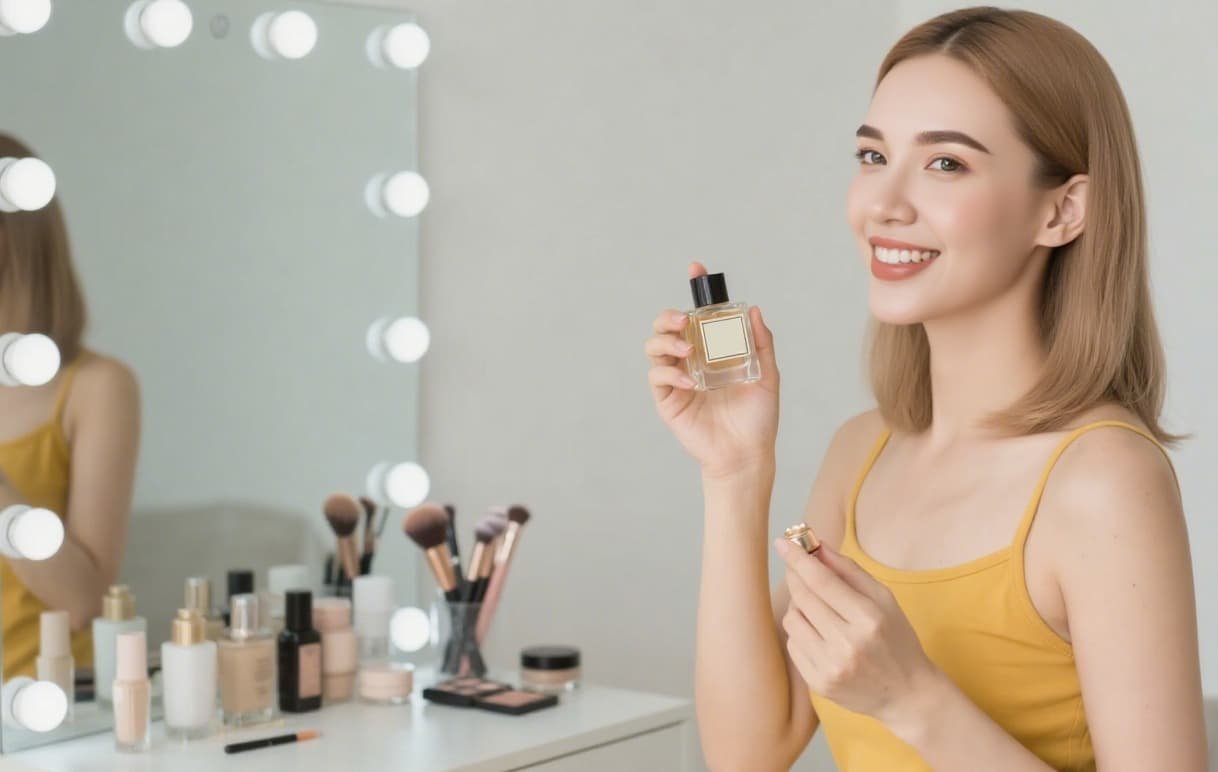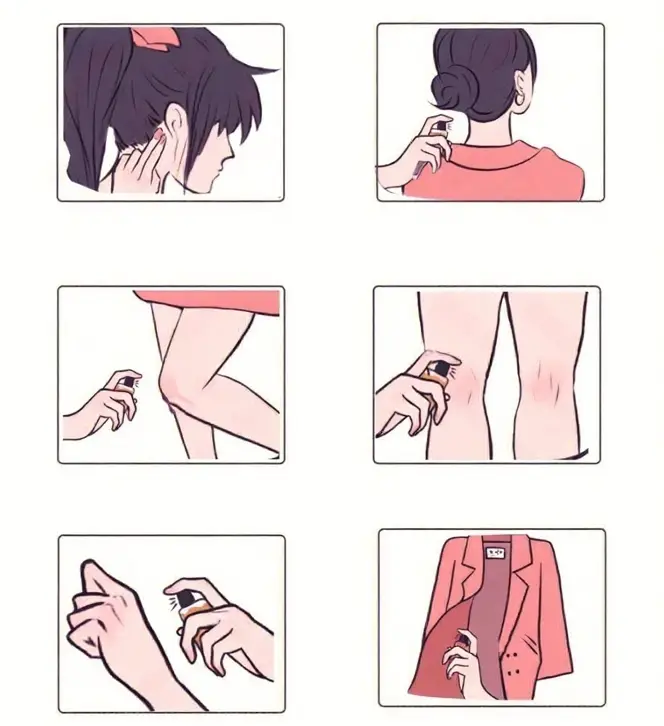A Guide to Applying Arab Perfumes for Lasting Fragrance

Are you tired of your perfume disappearing after just a few hours?
If you seek a truly long-lasting, layered fragrance experience, Arabian perfumes (Attar or Mukhallat) may be the answer.
However, simply owning these precious fragrances is not enough—mastering the art of application is the key to unlocking their extraordinary longevity.
This guide will delve into ancient wisdom from the Arabian Peninsula and modern scientific techniques to help your fragrance linger all day long.
Arabian Perfumes: What Makes Them Unique?
Arabian perfumes are not ordinary eau de toilette or eau de parfum. The key difference lies in:
- Ultra-high concentration of essential oils: They are primarily composed of high-concentration natural aromatic oils (such as oudh, rose oil, musk, amber, and sandalwood oil) or high-quality synthetic fragrances, with essential oil concentrations typically reaching 20% or higher (in contrast, Eau de Parfum typically ranges from 15% to 20%). This means that every drop contains immense aromatic power.
- Base oil carrier: These highly concentrated aromatic substances are typically dissolved in odorless or mildly scented plant oils (such as fractionated coconut oil or jojoba oil) rather than alcohol. The oil base not only better locks in volatile aromatic molecules but also gently adheres to the skin, reducing irritation, and slowly and continuously releases the fragrance as body temperature rises.
- Complexity and depth: Arabian perfumes are renowned for their rich, multi-layered, warm, and often smoky or animalic aromatic characteristics. Common core notes include oudh, rose, saffron, agarwood, amber, musk, sandalwood, vanilla, and patchouli. These ingredients inherently possess exceptional longevity.
Why do oil-based Arabic perfumes last longer?
The key to understanding their longevity lies in their evaporation rate:
Alcohol vs. oil-based:
- Alcohol: When alcohol-based perfumes (EDT, EDP) are sprayed, the alcohol quickly evaporates into the air, simultaneously “pushing” the top fragrance molecules (usually lighter, fresher notes) out strongly, creating a strong initial impression (top notes). However, alcohol evaporates extremely quickly, and the middle and base notes (typically heavier, more persistent notes) may also dissipate quickly if they lack sufficient carriers or do not bind tightly to the skin. The International Fragrance Association (IFRA) notes that the rapid evaporation of alcohol is one reason traditional perfumes have prominent top notes but relatively limited overall longevity.
- Oil-based: Oil-based carriers (especially fractionated coconut oil and jojoba oil) evaporate extremely slowly. They act as “adhesive” carriers, firmly “locking” fragrance molecules and gradually releasing them at body temperature in a gentle manner. This process avoids the sudden release of large amounts of fragrance molecules, instead providing a linear or slowly evolving, sustained, and stable release of fragrance. A briefing by the Fragrance Marketing Association (FMA) mentions that oil-based carriers can significantly reduce the evaporation rate of highly volatile fragrance components, thereby extending the overall perception time of the fragrance.
Skin affinity: Plant oils have better compatibility with human sebum, allowing them to adhere more closely to the skin and form a thin layer of fragrance, continuously releasing the scent. In contrast, alcohol dissolves oils on the skin’s surface, potentially causing some fragrance to be carried away or evaporate more quickly.
High-concentration essences: As mentioned earlier, the absolute content of effective fragrance components in Arabian perfumes is far higher than in most alcohol-based perfumes, providing a longer “fuel” reserve.
The Secret to Long-Lasting Fragrance: The Correct Application Guide for Arabian Perfume
To maximize the effectiveness of your Arabian perfume, follow these proven steps:
1,Ideal Timing: After Bathing
Key: Apply when the skin is slightly damp and pores are slightly open (immediately after bathing or after moistening the target area with warm water). Damp skin absorbs oils more easily, helping the fragrance blend better and prolonging its longevity. Research by the Society of Cosmetic Chemists (SCC) on skin physiology indicates that when the hydration of the stratum corneum increases, the permeability of lipophilic substances temporarily improves.
2,Precise Application Points: Pulse Points
Principle: These areas have blood vessels close to the skin surface and higher body temperature. Heat is the key driver for activating and diffusing fragrance.
Golden spots:
- Inner wrist: A classic location, convenient for unintentional sniffing during activities.
- Behind the ear: Stable body temperature, less prone to friction from clothing.
- Side of the neck/collarbone indentation: Warm body temperature, fragrance naturally disperses as the head moves.
- Inner elbow crease: Warm and protected, less prone to being quickly rubbed off.
- Behind the knee: As you move, the fragrance rises slowly from below (suitable for long skirts or pants).
- Chest/heart area: The core of body temperature, where the fragrance is warm and deep.

Avoid: The outer side of the wrists, which are prone to excessive friction; the back of the neck, which is prone to sweating; and the shoulders, which are easily covered by clothing.
3,Application technique: Dab, do not rub!
Action: Use the applicator stick provided with the perfume bottle to gently dab one drop (or as little as half a drop!) onto the selected pulse points. Typically, 1-2 points are sufficient, and for high-intensity perfumes, even half a drop may be enough.
Taboo: Never rub your wrists vigorously like you would with alcohol-based perfumes! Rubbing roughly disrupts the delicate molecular structure of the top notes (as advised by experts from the Fragrance Foundation), causing the scent to distort, lose its layers, and evaporate faster, thereby shortening the longevity. Let the oil droplets naturally come into contact with body temperature to slowly release their full charm.
4,Less is more: restraint is key
Principle: “Less is more.” Arabian perfumes have extremely high concentrations, and overuse can create an overwhelming, even unpleasant scent cloud, producing the opposite effect. Remember, high-quality Arabian perfumes are designed to be elegantly perceived at close range (the so-called “sillage” or scent trail), not to announce your presence from across the room.
Suggested starting point: Begin with a pulse point (such as one wrist or behind the ear), using no more than one drop. Wait 15–30 minutes for the fragrance to fully unfold and blend with your natural body scent (the so-called “dry down” stage) before deciding if a touch-up is needed. You will often be surprised by its powerful diffusion and longevity.
5,Layering technique (optional): Enhance depth and longevity
Same-series products: If the brand offers matching unscented or same-scented bath oils, body lotions, or hair perfumes, use them before applying the perfume. This provides a moisturized, scent-compatible base layer for the perfume, significantly extending the overall longevity (according to internal tests by the International Fragrance Association (IFF), using a matching body lotion can extend longevity by 30–50%).
Clothing Enhancement: Apply a single drop with extreme caution to the inner lining of clothing, scarves, or headscarves (always test on an inconspicuous area first to check for staining!). Fabric fibers effectively absorb fragrance molecules, releasing them slowly to provide an additional, mobile source of scent. Avoid direct application on delicate or expensive fabrics.
6,Maintaining fragrance: Daytime tips
Reapplication strategy: Arabian perfumes have remarkable longevity and typically do not require frequent reapplication. If enhancement is needed after 8 hours, apply only a tiny amount (half a drop) to a pulse point (such as the wrist). Avoid layering too much, which can cause the scent to become muddled.
Avoid interference: Use unscented or very lightly scented hand creams, lip balms, and skincare products. Strong soapy or lotion scents can clash with your perfume, disrupting its harmonious beauty.
7,Storage Wisdom: Protect Your Liquid Gold
Environment: Store perfume in a cool, dark, dry place (away from windows, heaters, and bathrooms). Light (especially UV rays) and heat are the perfume’s worst enemies, accelerating chemical reactions that cause the scent to degrade and the color to darken.
Container: Keep the original bottle tightly closed. Arabian perfume bottles are typically made of dark glass (brown, blue, or green), which naturally blocks light. Do not replace them with transparent containers. According to the International Organization for Standardization (ISO) standards for fragrance stability, the optimal storage conditions are a temperature below 15°C (59°F) and protection from light.
Respecting Perfume Culture: Tips on Application Etiquette
In Arab culture, perfume is an important part of personal grooming, hospitality, and religious rituals (the Prophet Muhammad encouraged believers to maintain cleanliness and use fragrances). Sharing fragrance (such as letting a friend smell your wrist) is a common gesture of friendship. However, please note:
- In conservative religious settings or certain formal occasions, perfumes that are overly strong or have a strong animalic scent (such as certain types of musk) may be unwelcome. Keeping fragrance private and appropriate is a general principle.
- Giving Arabic perfume is considered a very thoughtful and prestigious gift.
Frequently Asked Questions
- Q: Why does my Arabic perfume smell different from when I tested it?
A: This is completely normal! Arabic perfumes require time (at least 15–30 minutes) to fully blend with your skin temperature and natural body odor (known as the “dry down” base note) to reveal their most authentic and captivating scent. Please be patient and allow it to evolve.
- Q: Why does the fragrance not last as long as I expected?
A: Possible reasons: improper application location (not on pulse points), insufficient amount (hard to believe, but sometimes half a drop really isn’t enough to cover a large area of skin!), extremely dry skin (oils are absorbed too quickly), improper storage causing the perfume to degrade, or developing “olfactory fatigue” (nose blindness) toward the perfume. Try different application points and ensure your skin is moisturized.
- Q: Can it be sprayed on hair?
A: Yes, but with extreme caution! It’s best to use a specialized hair fragrance oil (typically lower concentration and gentler formulation) or apply an extremely small amount (half a drop) on a comb to style the ends. Avoid direct contact with the scalp, as excessive use may cause greasiness or irritation. Always test for staining first.
Embrace Timeless Fragrance
Arabian perfumes are treasures of olfactory art, their charm lying in their depth, complexity, and extraordinary longevity. By mastering this application guide, you unlock the secret to letting this precious fragrance linger throughout the day and elegantly unfold. The key lies in understanding its oil-based nature, respecting its high concentration, applying it precisely to pulse points, avoiding friction, using it sparingly, and storing it carefully. Start with a single drop and experience how Arabian perfume wisdom transforms fleeting pleasure into a lasting personal signature, allowing you to exude unforgettable Eastern charm in every gesture.
Authoritative data sources:
1.International Fragrance Association (IFRA): Provides authoritative information on the safety of fragrance ingredients, usage standards, and foundational industry knowledge. Its scientific publications are an important reference for understanding the volatility and stability of fragrances.
2.Fragrance Materials Association (FMA) of the United States: Publishes industry guidelines and technical briefs covering fragrance chemistry, toxicology, and regulatory aspects, serving as a reliable source for understanding the characteristics of fragrance carriers (such as alcohol and oils).
3.The Fragrance Foundation (USA): As the authoritative organization for the perfume industry, it provides educational resources and consumer guidelines, with its expert recommendations (such as avoiding rubbing perfume) widely recognized.
4.International Organization for Standardization (ISO): Establishes international standards, including testing methods for fragrances and essential oils (e.g., ISO 9235:2013 Aromatic Substances Vocabulary), providing scientific basis for storage conditions and stability testing. Its standards are adopted by global industries and regulatory bodies.
5.Major Flavor & Fragrance Companies (e.g., Givaudan, Firmenich, IFF, Symrise): These leading fragrance and flavor companies have extensive R&D departments that conduct ongoing internal research on fragrance performance (e.g., longevity, diffusion, interaction with different carriers). Their published scientific papers or presentations at industry conferences are important sources of cutting-edge data (note: some proprietary research may not be publicly available).
6.Peer-Reviewed Scientific Journals:
- Flavour and Fragrance Journal
- Journal of Chromatography A (analyzing fragrance components)
- Journal of Cosmetic Science
- International Journal of Cosmetic Science
- Dermatology-related journals (e.g., Journal of Investigative Dermatology, Experimental Dermatology) study skin barrier function and transdermal absorption of substances.

